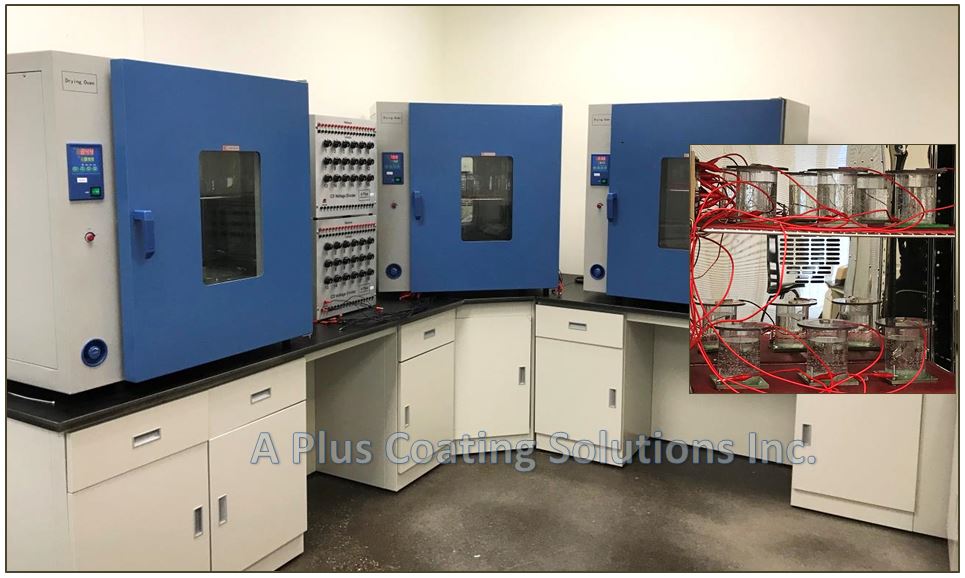Protective coatings in conjunction with Cathodic Protection (CP) are broadly used by corrosion engineers to extend the useful life of buried or submerged equipment. Coatings provide a primary line of defense against corrosion. As discontinuities (also called “holidays”) in the coatings are almost unavoidable as a result of coating application or damages from handling, installation, stresses from surrounding environment, and age related breakdown, CP supplies an external source of current to counteract the electrochemical potential of nature corrosion, so the exposed steel at the holidays can be protected. However, the electrical potentials from the CP may cause loosening of the coating, beginning at holiday edges. Cathodic disbonding is a type of failure characteristic of cathodic protection. For a coating to maintain its integrity in the present of CP, the coating must resist cathodic potential.
The Cathodic Disbondment (CD) test provides accelerated conditions for cathodic disbondment to occur and provides a measure of resistance of coatings to this type of action. Good CD test results (low radii of disbondment) indicate that the coating is expected not to delaminate to a large extent in the presence of cathodic protection. This makes the CD test valuable tool for developing and qualifying coatings, and quality control of coatings.
A Plus Coating’s laboratory is equipped to perform Cathodic Disbondment tests with the following different methods:
- Testing on coated panels samples using attached cell method
- Testing on externally coated pipe samples using immersion method
- Testing with or without anode isolation
- Testing of strained coatings (Strained CD)
- Testing of high temperature coatings at designed temperatures >95°C

Test methods for cathodic disbondment are available in:
- ASTM G8; ASTM G42; ASTM G95
- CSA Z245.20 Sections 12.8 and 12.13; CSA Z245.21 Section 12.3
- NACE TM0115; NACE SP0394 Appendix F
- ISO 15711; ISO 21809-1 Annex H; ISO 21809-2 Annexes A.9, A.10; and A.15; ISO 21809-3 Annex G
- BS EN 10290 Annex E; BS EN 10289 Annex E; BS EN 10268 Annex K
- DIN 30670 Annex C
- API 5L7 Annex 11
- AS NZS 4352
Test Samples:
- 4″×4″ coated flat panels (CSA, NACE, API, DIN, BS EN, and AS standards; all ISO standards except ISO 15711)
- Minimum 150 mm × 70 mm × 20 mm all-side coated flat panels (ISO 15711)
- Minimum 5″ × 5″ coated flat panels (ASTM G95)
- Minimum 8″ length external coated pipe samples (≤4.5″ in diameter recommended) (ASTM G8, G42)
